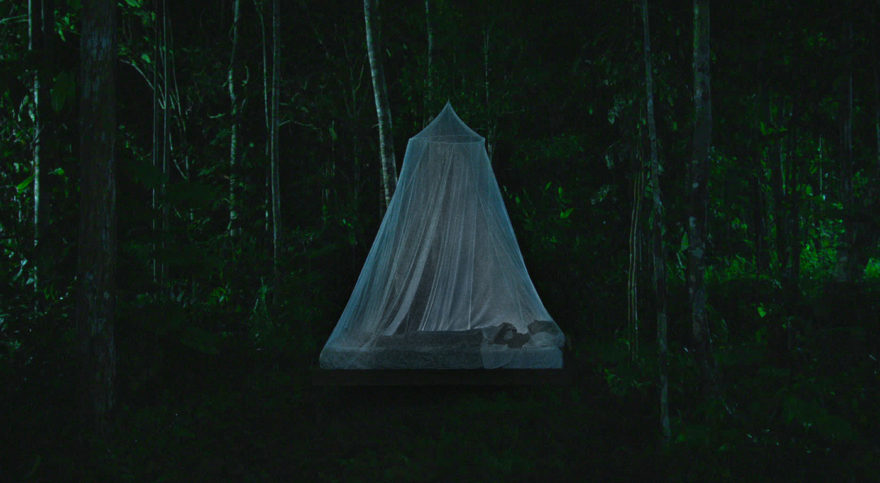“Icaros: A Vision” premiered worldwide this week at the 15th Tribeca Film Festival. A first film for its co-directors—the photographer and video artist, Leonor Caraballo, and visual artist, Matteo Norzi—the picture is a shamanic journey, a visual psychedelic trip toward the loss of fear. In this special interview with Monrowe, Matteo Norzi delves into his thoughts on ayahuasca, creativity, and how “Icaros” has changed his life forever.


For those who haven’t heard of it, what is Ayahuasca?
Ayahuasca comes from the Amazonian Rainforest. It’s a brewage made out of mixing together two plants: a vine by the name of ayahuasca and a shrub named chacruna. It’s usually ingested in the traditional setting of a ceremony and administrated by a shaman. It is used for different kinds of purposes, nowadays mostly for healing. It has positive outcomes for overcoming addictions: eating disorders and different types of traumas. Recently it has been rediscovered as a result of current studies about psychedelics and is becoming mainstream after more than 50 years of being shunned.
The story of “Icaros: a Vision” has a very artistic and magical style. How do reality and fiction collide in your film?
The film is a collaboration between a group of artists. We scheduled two filmings around 2 ceremonies in order to enhance the reality and fiction mix throughout the film. Our actors drank ayahuasca for the very first time while the camera was rolling; we wanted to show how the characters could change through a very intimate experience.
Were the actors still acting under the influence of ayahuasca?
Under the influence of ayahuasca there is the dissolution of your ego, which is definitely a tool for actors because you can understand where your fear comes from and then find it again (if you need it). It’s very hard to be different from your actual self when you drink ayahuasca. It’s kind of a mirror of the soul.
The scenes where the actors are experiencing ayahuasca are full of psychedelic references and artistic imagery. Where did you draw these images from?
We really tried to reinvent the psychedelic aesthetic. It hasn’t been reinvented since the 60’s. We wanted to avoid the cliché of the usual hallucinogenic aesthetics. We created everything on the idea of vision.
For the scenes of the first ceremony we used the MRI imagery to evoke the idea that ayahuasca is a spiritual X-ray machine—a tool for scanning the body and the soul. In the second ceremony, we used other kinds of metaphoric devices: televisions, video cameras, an ophthalmic testing device, a virtual reality game…. All of these together with ayahuasca are an attempt to define the concept of vision. We wanted to use western tools and combine them with the healing plant.
What inspired the script written by you and Leonor?
While we were traveling through the Amazon we read “The Three Halves of Ino Moxo” [by César Calvo], which added mythological references to the script. We wrote the first half of the script during the happiest days of our lives in hotel rooms and airports while we were exploring the landscape of Peru.
The second half of the script was actually written in the waiting room of a hospital in New York. My co-director Leonor Caraballo had metastatic breast cancer before going to production. Both personal experiences influenced the film.
Can a plant that belongs to a shamanic culture like ayahuasca help people from the west?
Very often, if you don’t find the right people to experience ayahuasca with, nor the right shamans to guide you, you’ll go home disappointed with the outcome. This is a result and reality of the ayahuasca tourism business.
I invite people to be wary about this aspect. Being that ayahuasca is a fantastic healing and diagnosis tool, the Shaman is able to understand where your problem is, and you are able—through the medicine itself in combination with the songs—to explore your subconscious.
How did the film change your life?
I used to be a frustrated artist trying to “make it” in a competitive city like New York. I had a bit of success, but in the end I found myself lost in the forest of midlife. I was not happy; I was not traveling anymore. When my co-director invited me to go with her to Peru, I couldn’t say no. The moment I drank ayahuasca, not only did I solve a lot of personal problems that were making me struggle, but I also decided it was such a fantastic experience that it was worth doing a film about it. I abandoned all my other projects, stopped replying to curators and dealers and started writing the script with Leonor. Three years later we premiered at the Tribeca Film Festival.
Storytelling is less about yourself and more about telling a story to somebody else. I’m hoping that I’ll be able to put together a non-profit organization that will go by the name of “The Shipibo-Conibo Community Center of New York” it’s going to be something between an art space and a research center for consciousness-related matters, shamanism, and plant medicine.
Is this also something your co- director Leonor wanted to develop?
Yes, it was actually the very last project Leo was working on, she had no intention to give up on her life. She was already planning her next project.

Pictured: Co-Directors, Leonor Caraballo Matteo Norzi
Image courtesy by Conibo Productions